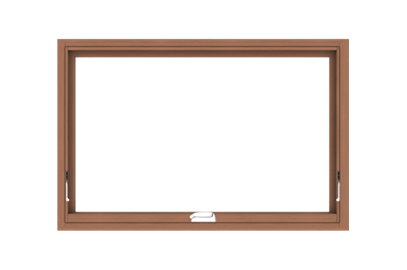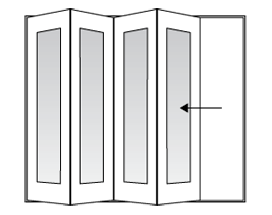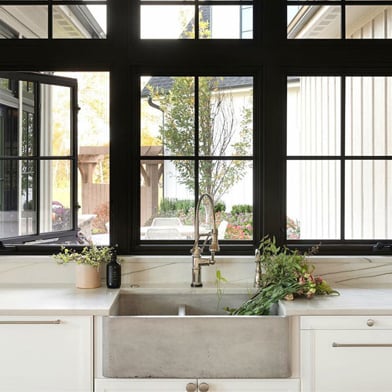Tips
What is an awning window?
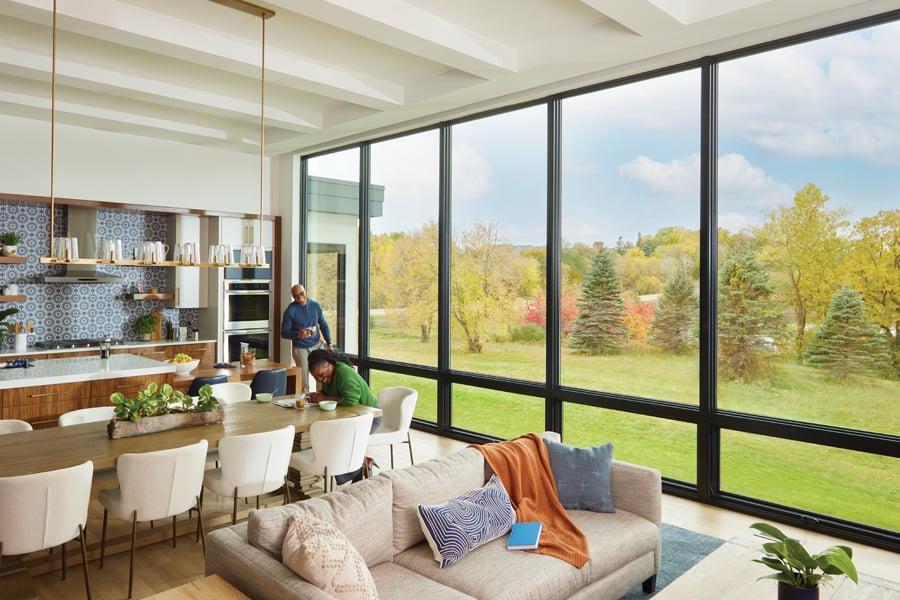
As a standalone opening or in combination with other windows, an awning window can be the perfect choice for your home — find out how.
What is an awning window?
An awning window is horizontally oriented and has hinges at the top, so it opens outward like an old-fashioned garage door. Its sash acts like a canopy when open. Opening is easy thanks to the crank and the option to add automation, so this window can open with the touch of a button. Like all our windows, it can be ordered with an insect screen. Its design, with a seal similar to a refrigerator door, makes it one of our most energy-efficient windows.
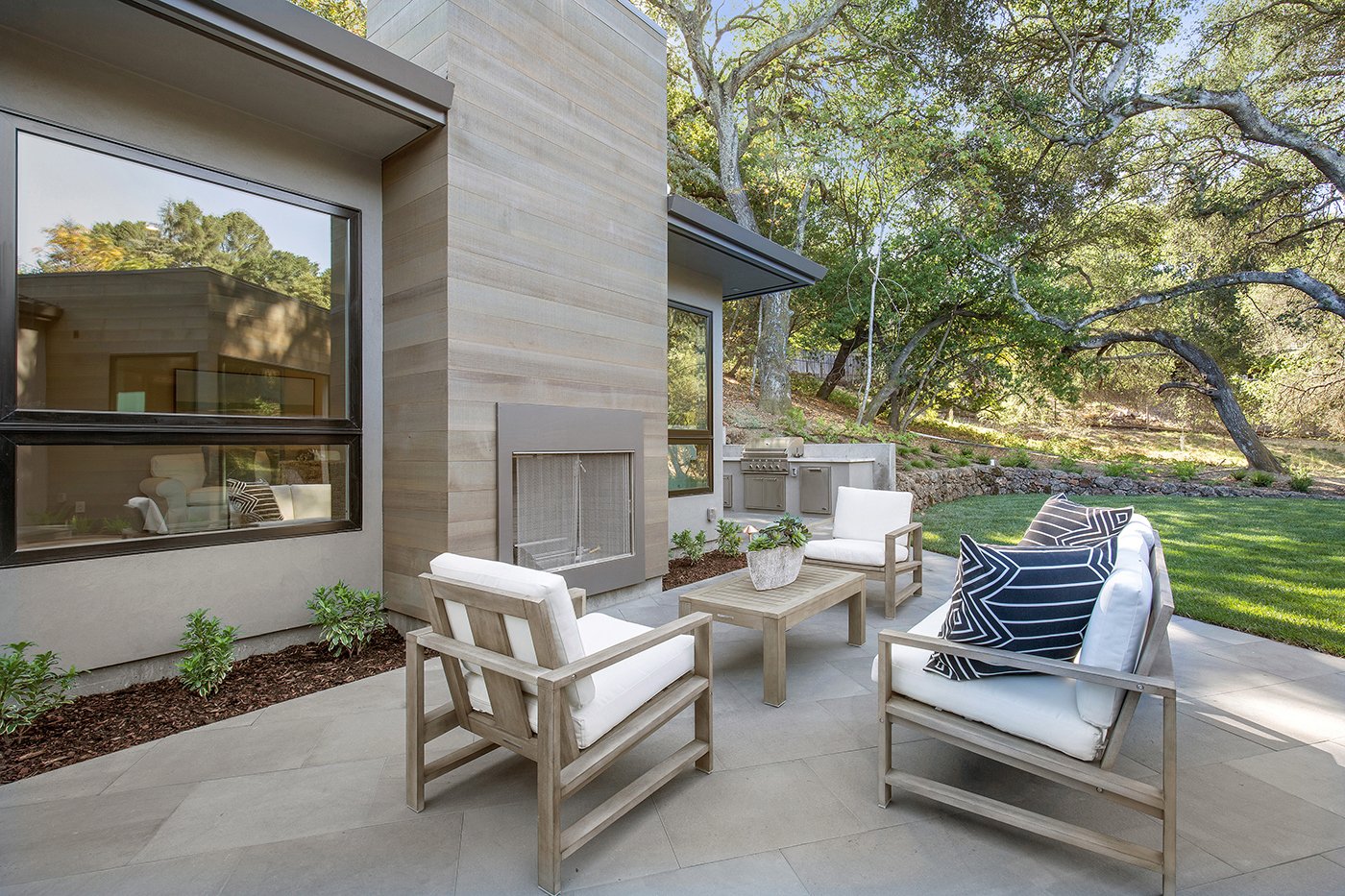
What are the benefits of an awning window?
There’s a lot to love about an awning window, including:
- Canopy opening brings in fresh air, even when it’s raining.
- Crank makes it easy to open, even in an out-of-the way space.
- Horizontal shape suits a number of different spaces, home styles, and more.
- Energy-efficient design makes it a great choice in any climate!
Where do awning windows work best?
The shape and opening of an awning window lends it to some unique applications. Depending on where it’s used, it can suit a variety of home styles — though it’s often chosen in more modern homes. Here are a few places where it’s ideally suited.
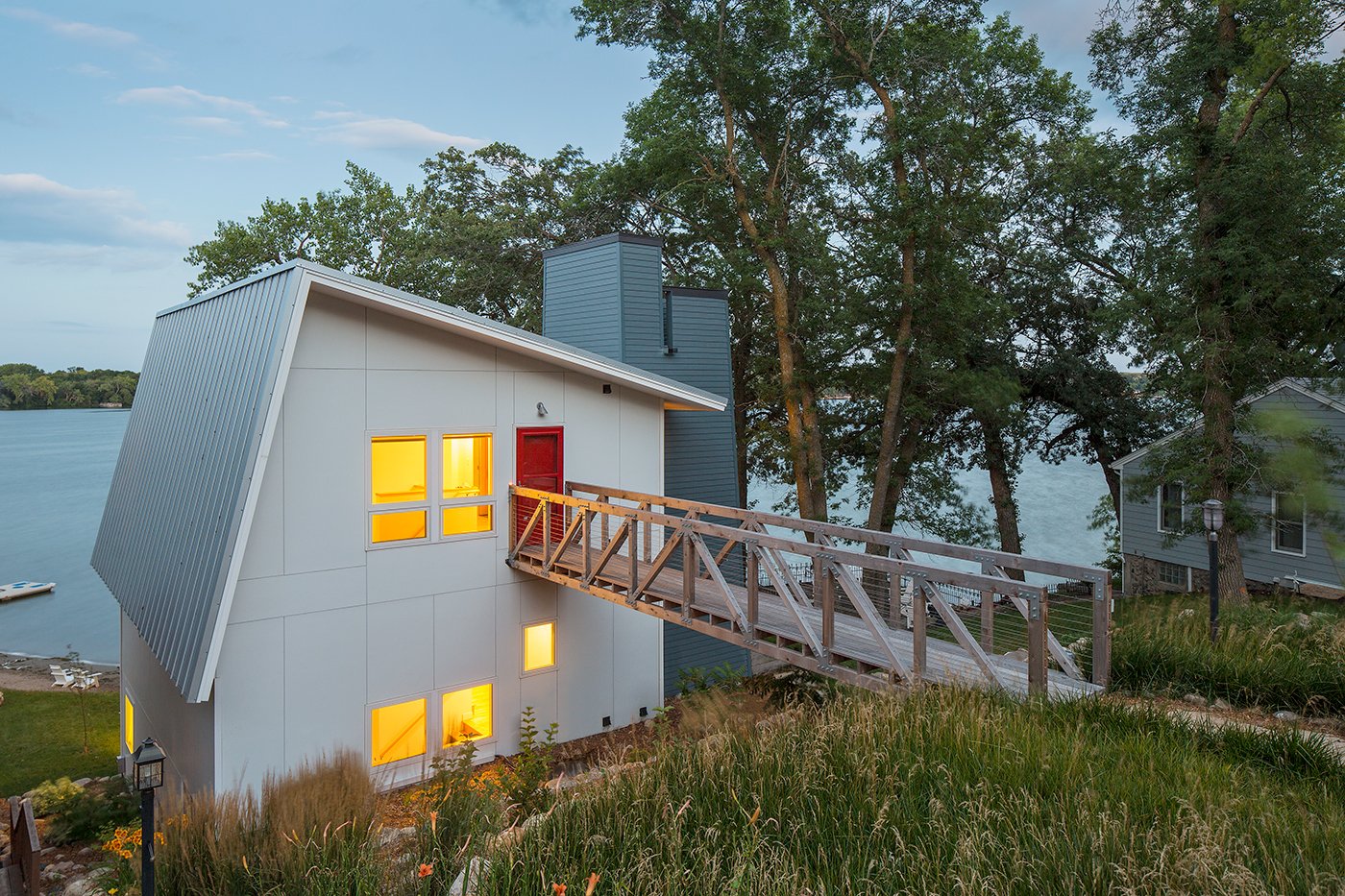
A modern lake home with a strikingly simple look that’s well complemented by the 100 Series Picture Windows joined to 100 Series Awning Windows.
High on a wall
Anywhere you want light, fresh air, and privacy, an awning window is perfect. Here are a couple ideas on where you could place it:
- In a bathroom, where you always want the option to bring in fresh air, it can even be opened in the rain.
- In a basement, where above-ground space may be limited, it can be placed high on the wall and opened easily with its crank.
- As a clerestory, or a window placed along the roofline, its horizontal shape fits well, and it can be used to create a modern look.
Did you know: If your window is beyond reach, our 400 Series Awning Windows, A-Series Awning Windows, and E-Series Awning Windows can be ordered with a power operator, which allows a window to open with the click of a button.
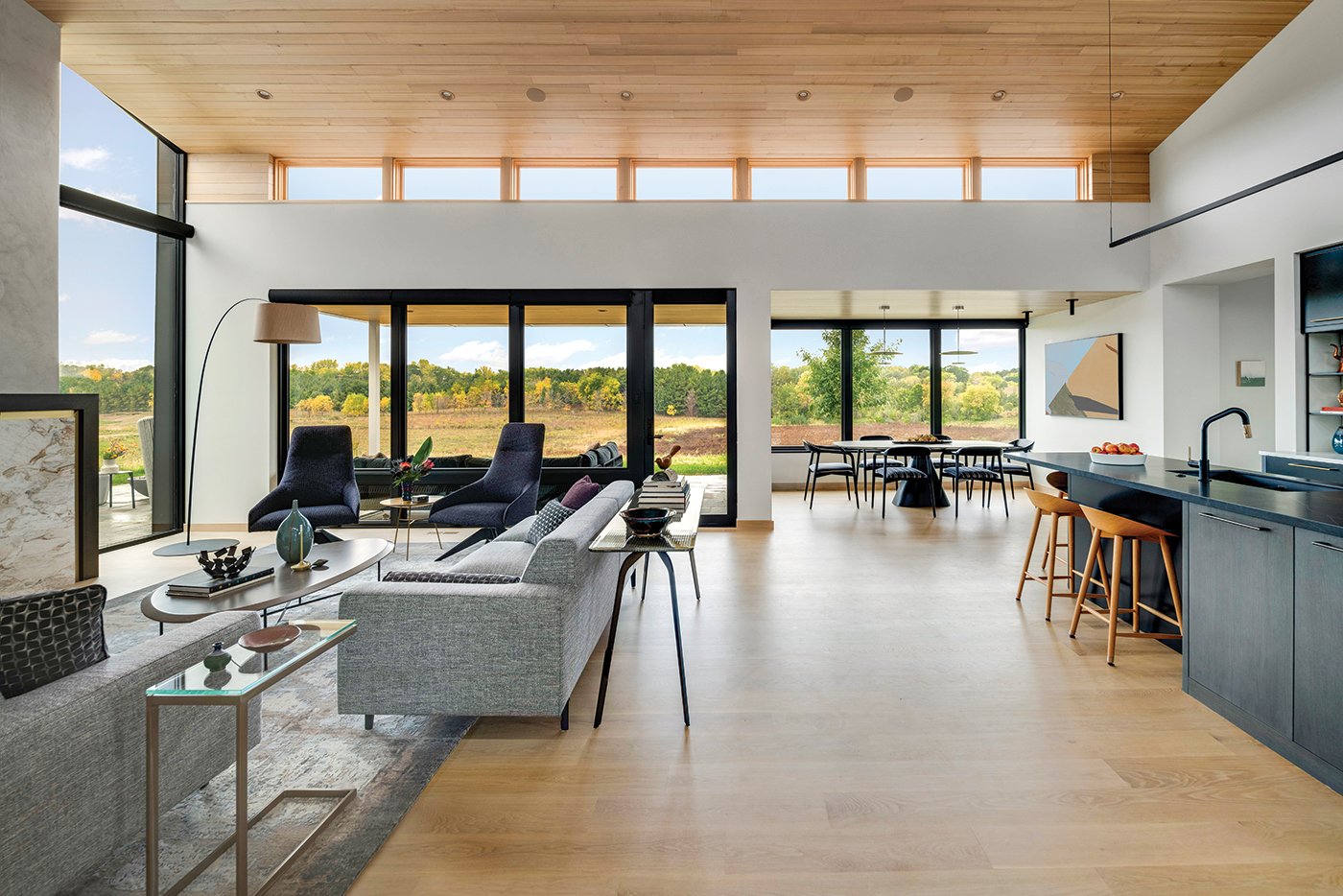
In a window combination unit
If you’re looking to create a showstopping feature by combining multiple types of windows, the versatile awning plays well with others. Here are a few ideas:
- Picture and awning windows are often combined to frame big views and bring in fresh air, respectively. You’ll find this classic combo in many modern homes.
- Above a door (called a transom), awnings have long been used as a way to bring in fresh air, even when the door is closed.
- Above another window (also called a transom), an awning can expand the opening creating a feeling of spaciousness that’s like the effect created by a floor-to-ceiling window.
Did you know: This type of window comes in sizes perfect for completing large window configurations. For example, the A-Series Awning Window can be up to 6-feet wide and 4-feet tall. If you’re aiming for clean lines and minimal framing, talk to your builder about ordering windows that are designed to be installed together. This is called joining.
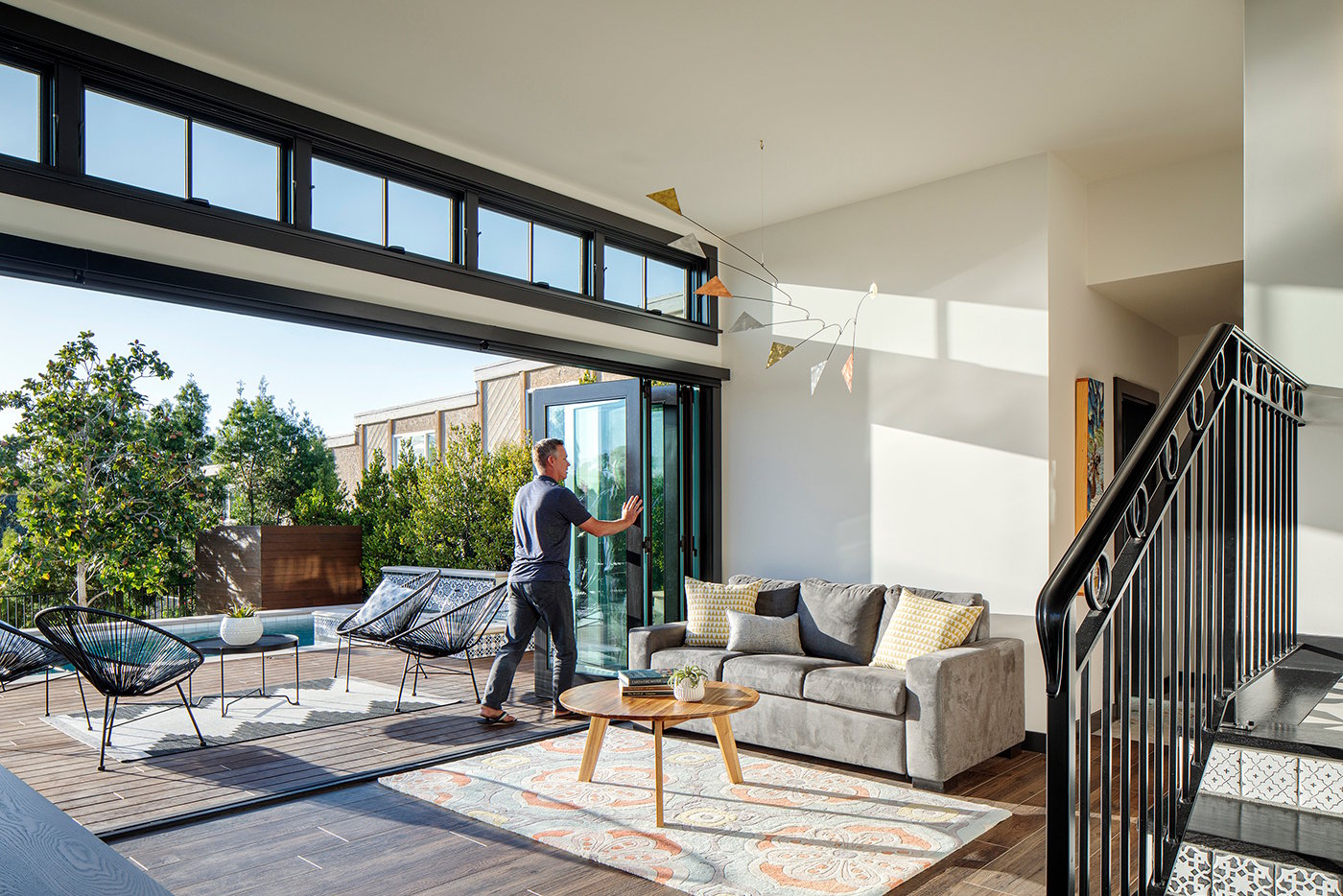
The row of windows above the Folding Outswing Door are E-Series Awning Windows. Windows above a door or another window are called transom windows. While transoms are often fixed windows (meaning they don’t open), they don’t have to be and awnings are a great option when you want to bring in fresh air.
Are awning windows more energy efficient?
Yes! Awning windows (along with casement windows) are some of our most efficient windows. This is due to their single-sash design, which allows fewer opportunities for leaking air. In addition, the hardware actually pulls the sash into the frame for a tight seal.
You can also make selections to further maximize your awning window’s energy efficiency — here's how:
- Consider triple-pane glass: All our windows come standard with dual-pane glass, but an even more energy-efficient glass type is available. Triple-pane glass is an option with A-Series Awning Window and our E-Series Awning Window.
- Select the right glass option: All our windows come standard with a low-emissivity (Low-E) coating, which helps reflect heat in a way that maximizes energy efficiency in your climate. Find out more about selecting the right glass option with a coating (or coatings) for optimal performance in your area.
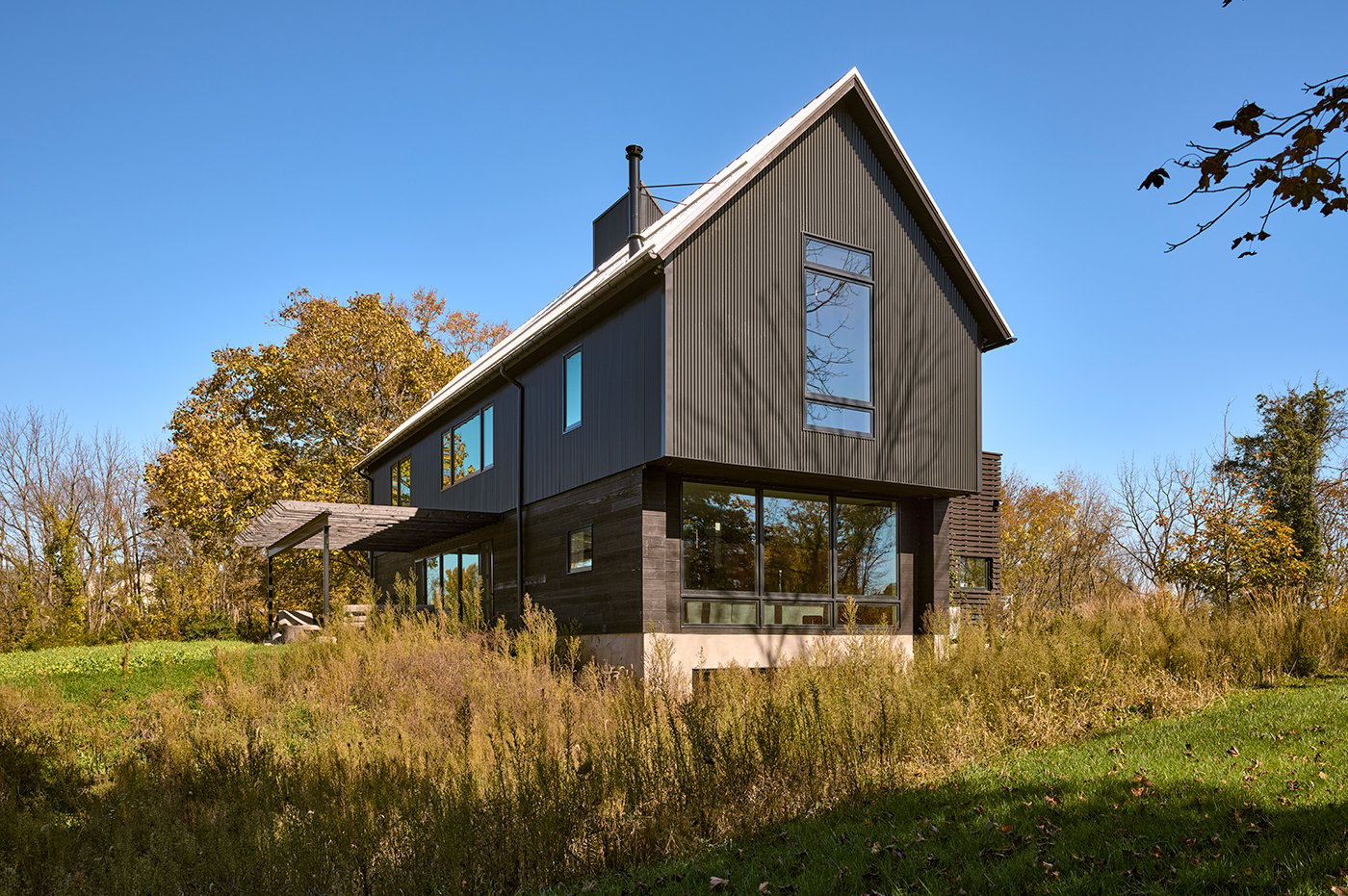
How do you clean an awning window?
Like all windows, awning windows should be cleaned regularly. This will make the most of your natural light and help maintain your windows over time.
One thing that can make cleaning awning windows a little bit tricky is that they’re often placed in high locations. If that’s the case in your home, it might be wise to hire a professional window cleaner. If you feel equipped to clean your own windows, here’s what else you should know:
- Interior cleaning: Cleaning the interior of an awning window is no different than cleaning any other type of window. Get started with our detailed instructions and pro tips about how to clean windows.
- Exterior cleaning: Some of our windows can be cleaned from inside the home — all our double-hung windows have tilt-wash capabilities, and casements can be cleaned from indoors too. Our awning windows, however, are not designed to be cleaned from the inside. You must go outside to clean their exteriors.
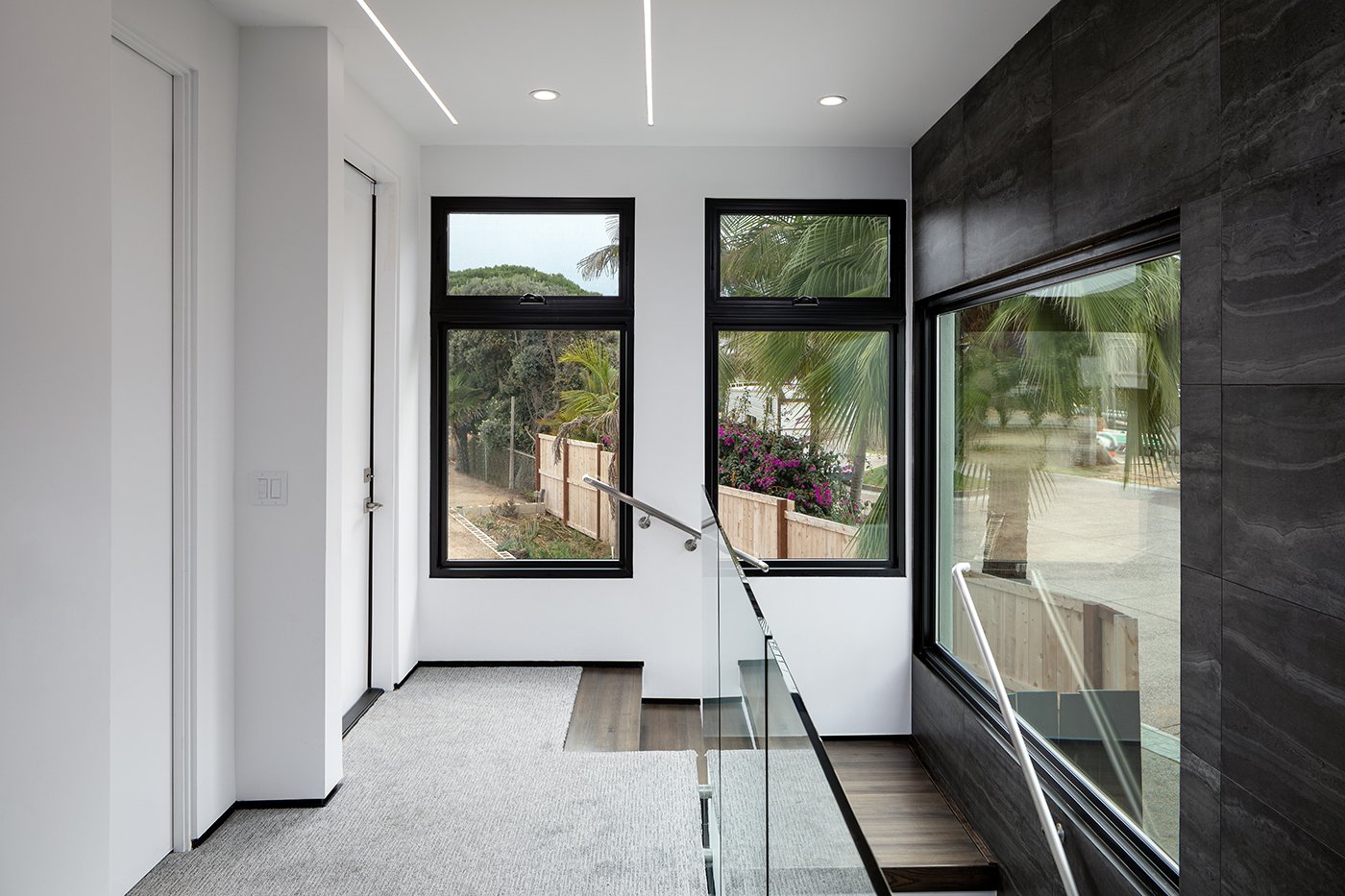
100 Series Awning Windows above 100 Series Casement Windows enlarge the openings in the wall and flood the hallway and stairwell with light.
Looking for a replacement awning window?
A great option for replacement is available with the 100 Series Awning Window insert replacement. Insert replacements are windows that can be installed into existing frames that are in good condition — not out of square, no rot, etc. An insert creates minimal disruption allowing you to keep your original frame along with interior and exterior trim, and siding. A contractor can tell you if insert replacement windows will work in your home, and we can help you find an Andersen Certified Contractor in your area.
Awning window FAQs
How do awning windows differ from casement windows?
What materials are awning windows made of?
Awning windows are available through all our product lines, so no matter the material you seek, we likely have a window that will work for your project. Here’s a quick overview of the materials our awning windows are made from:
- A-Series windows have wood interiors and fiberglass and Fibrex® material exteriors.
- E-Series windows are wood with an aluminum cladding on the exterior.
- 400 Series windows are wood with a vinyl cladding on the exterior.
- 200 Series windows are wood with a vinyl cladding on the exterior.
- 100 Series windows are made of our trademarked Fibrex material — the smart alternative to vinyl.
Are awning windows suitable to all climate conditions?
Yes, awning windows are a great choice in any climate. This is because they are one of the most energy-efficient windows, so an awning is a good choice no matter if your energy costs are associated with heating, cooling, or both — depending on the time of year. Find out more details on how to pick out energy-efficient windows.
Can awning windows be customized to fit specific design requirements?
Yes, there are multiple ways awning windows can be customized to fit specific design requirements. The exact customizations will depend on the product line selected. Here’s what to know:
- Sizing: Awning windows are available in an array of standard sizes but our largest are available through the A-Series product line. Custom sizing can be specified to 1/8” — explore sizing resources.
- Finishes: The exact paint colors, wood species, and wood stains available depend on the product line. For the widest selection, seek out our E-Series product line, which offers more than 50 standard colors, plus custom options.
- Materials: If you prefer a wood interior, select one of our clad-wood lines — A-Series, E-Series, or 400 Series. Each of these product lines has a different protective material on the exterior, including a composite exterior on the A-Series, aluminum exterior on the E-Series, and vinyl exterior on the 400 Series. In addition, we offer an all-composite frame through the 100 Series product line.



